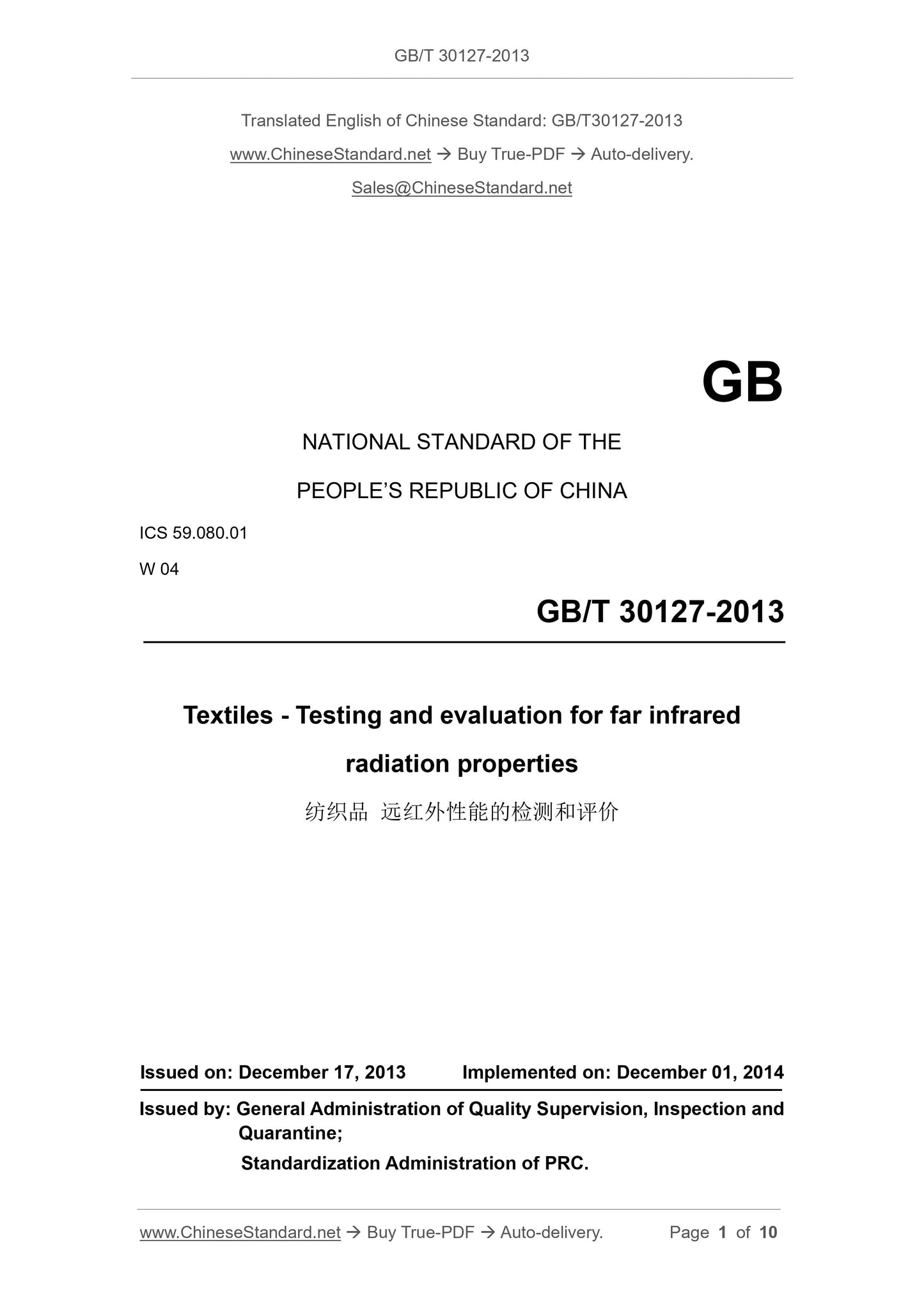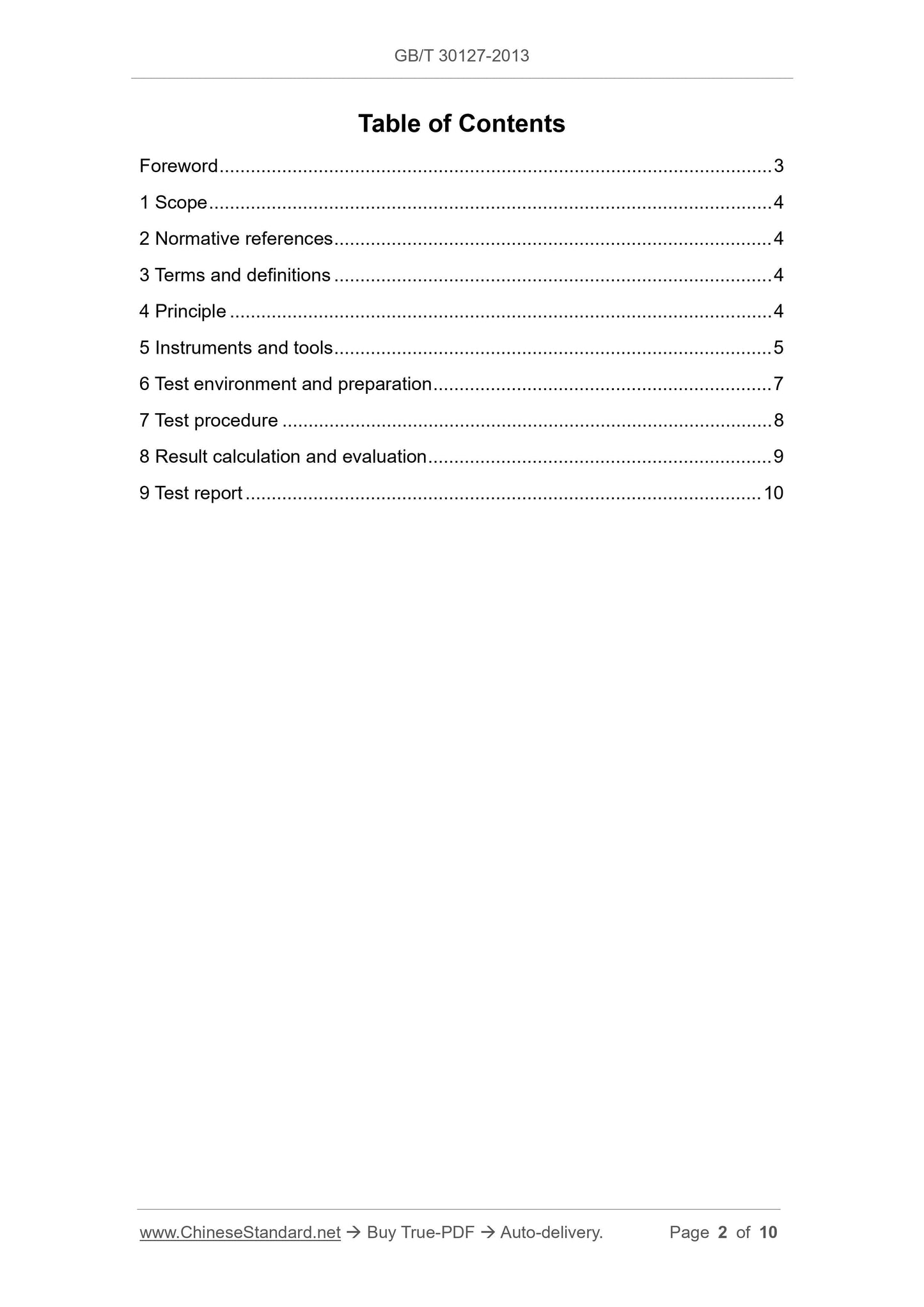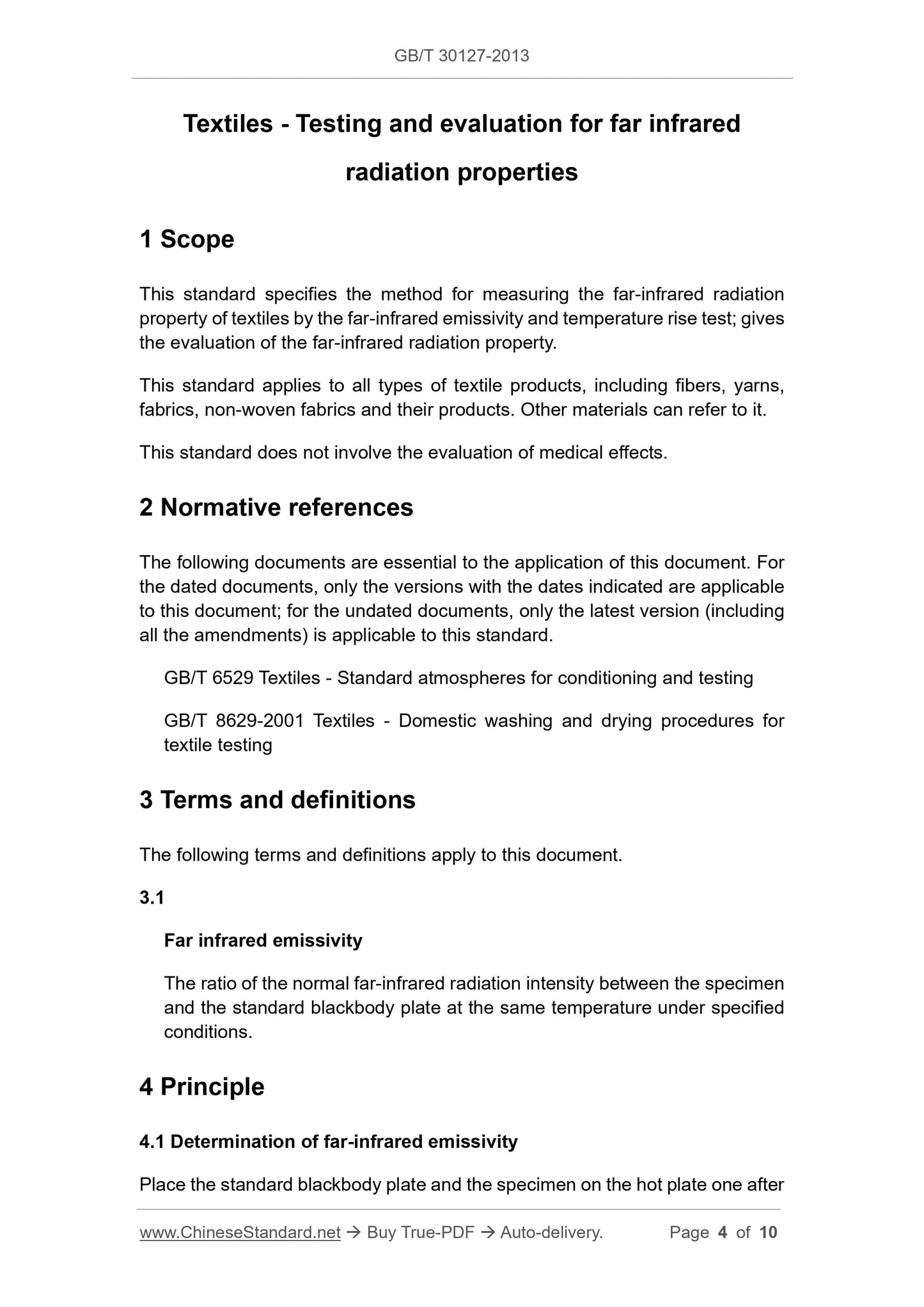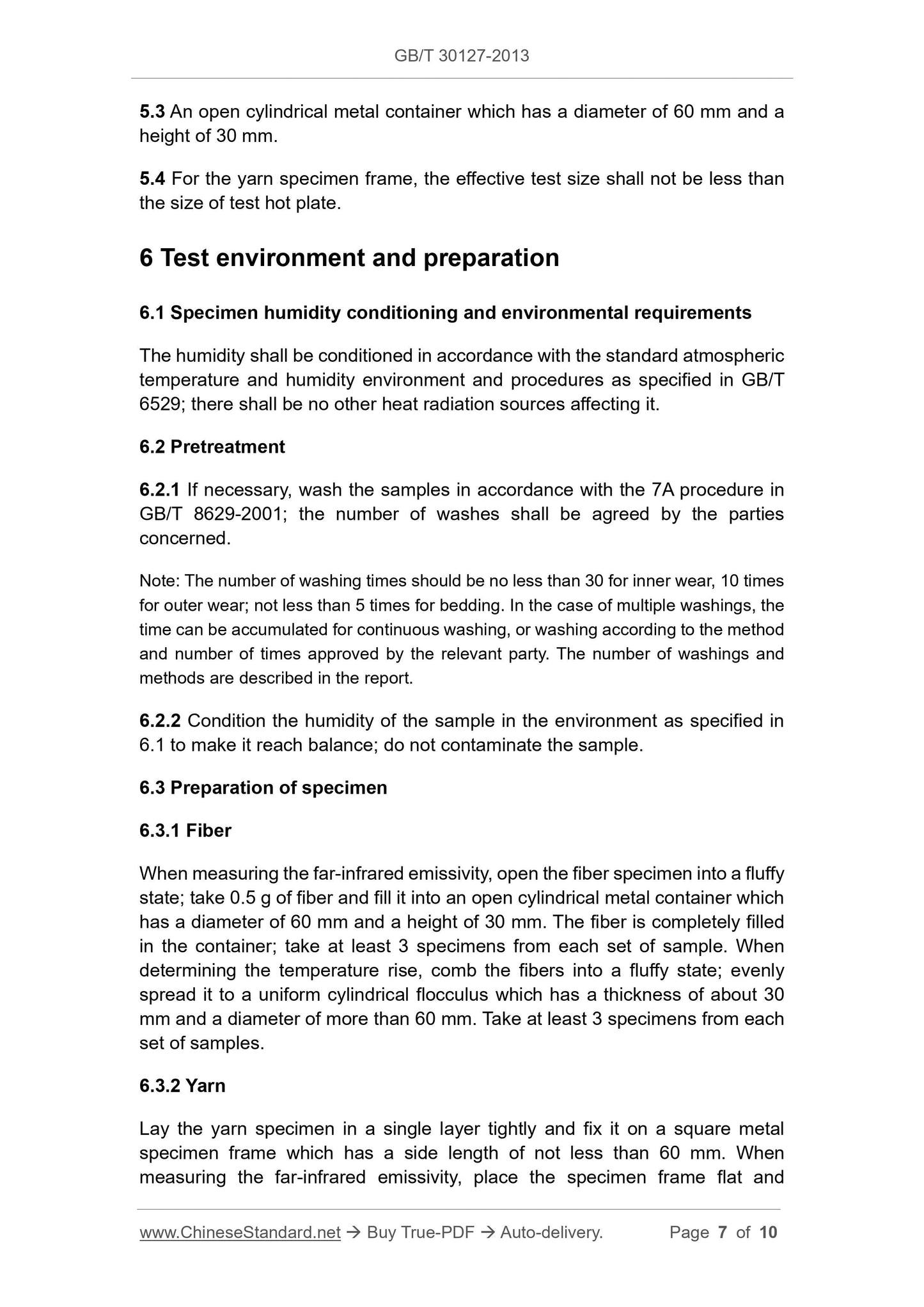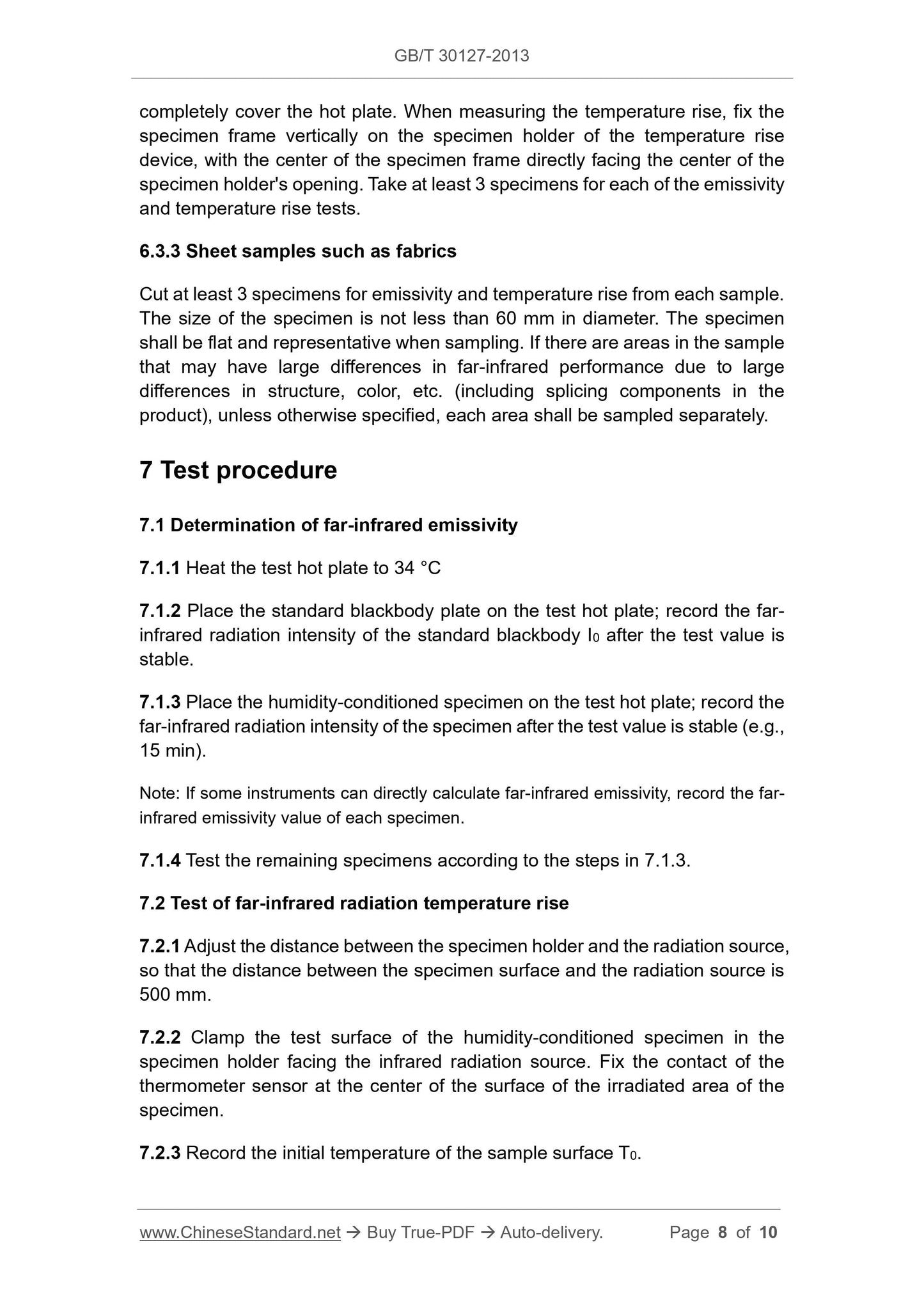1
/
of
5
www.ChineseStandard.us -- Field Test Asia Pte. Ltd.
GB/T 30127-2013 English PDF (GB/T30127-2013)
GB/T 30127-2013 English PDF (GB/T30127-2013)
Regular price
$145.00
Regular price
Sale price
$145.00
Unit price
/
per
Shipping calculated at checkout.
Couldn't load pickup availability
GB/T 30127-2013: Textiles - Testing and evaluation for far infrared radiation properties
Delivery: 9 seconds. Download (and Email) true-PDF + Invoice.Get Quotation: Click GB/T 30127-2013 (Self-service in 1-minute)
Newer / historical versions: GB/T 30127-2013
Preview True-PDF
Scope
This standard specifies the method for measuring the far-infrared radiationproperty of textiles by the far-infrared emissivity and temperature rise test; gives
the evaluation of the far-infrared radiation property.
This standard applies to all types of textile products, including fibers, yarns,
fabrics, non-woven fabrics and their products. Other materials can refer to it.
This standard does not involve the evaluation of medical effects.
Basic Data
| Standard ID | GB/T 30127-2013 (GB/T30127-2013) |
| Description (Translated English) | Textiles - Testing and evaluation for far infrared radiation properties |
| Sector / Industry | National Standard (Recommended) |
| Classification of Chinese Standard | W04 |
| Classification of International Standard | 59.080.01 |
| Word Count Estimation | 8,819 |
| Quoted Standard | GB/T 6529; GB/T 8629-2001 |
| Regulation (derived from) | National Standards Bulletin No. 25 of 2013 |
| Issuing agency(ies) | General Administration of Quality Supervision, Inspection and Quarantine of the People's Republic of China, Standardization Administration of the People's Republic of China |
| Summary | This standard specifies the use of far-infrared emissivity and temperature rise test measures the performance of far infrared textiles methods, and gives the evaluation of the performance of the far-infrared. This standard applies to all types of textile |
Share
